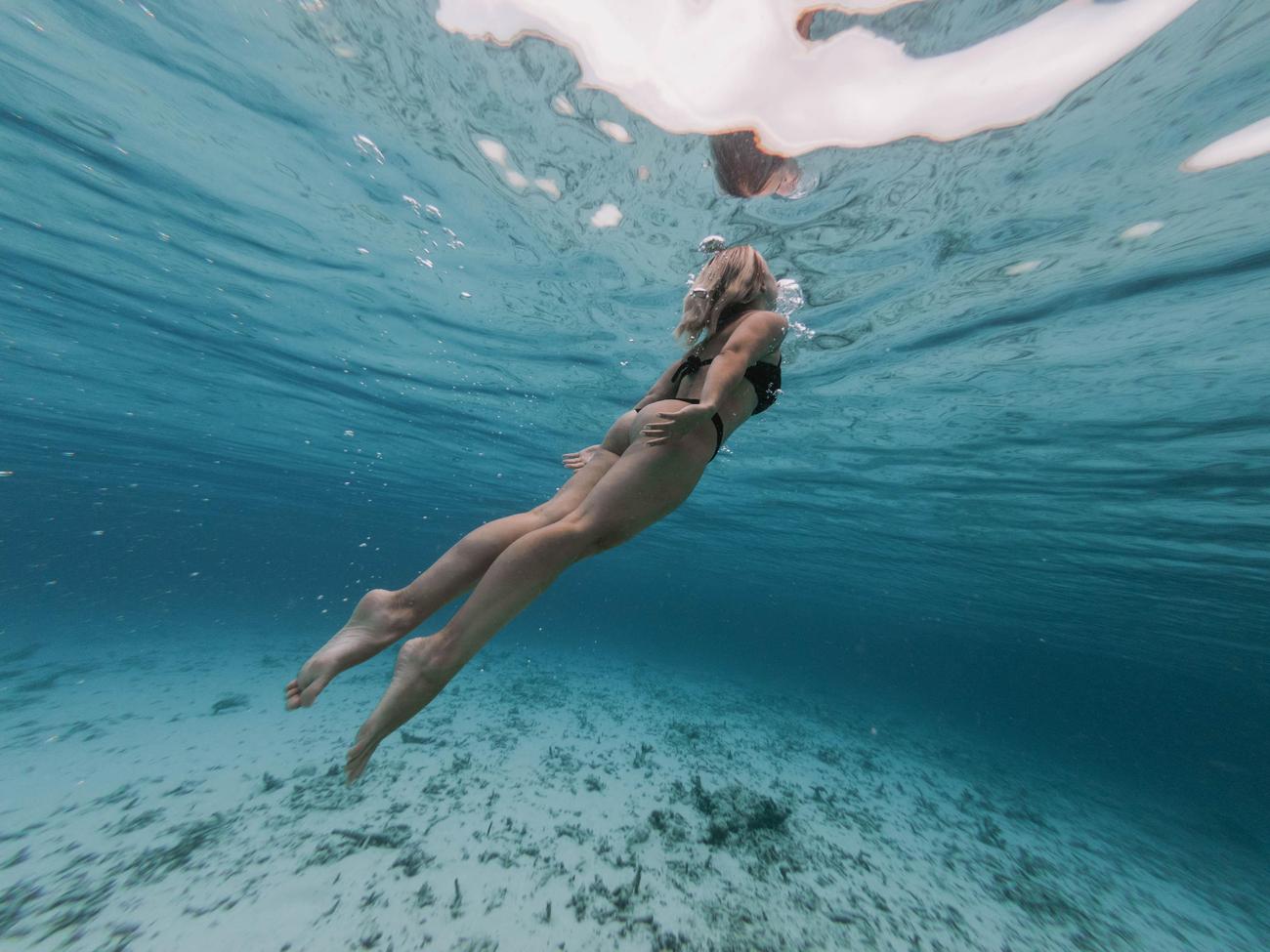Are you ready to dive into Olympic swimming’s best-kept secrets? In this article, we will be exploring the fascinating world of lesser-known facts and remarkable achievements that often go unnoticed in the realm of swimming at the Olympics. As an experienced sports journalist with a passion for uncovering hidden gems, I am here to take you on a journey through the depths of Olympic swimming, shedding light on the often overlooked aspects that make this sport so captivating. Get ready to be amazed as we unveil the hidden stories behind the lanes of Olympic swimming!

Lesser-Known Swimming Facts in Olympics
In the vast sea of Olympic swimming history, there are hidden gems waiting to be discovered. These lesser-known facts tell captivating stories of triumph, innovation, and the relentless pursuit of excellence. As we dive into the depths of Olympic swimming, let’s uncover some fascinating tidbits that often go unnoticed.
Competitive swimmers swim 6-12 miles a day: Behind the scenes, these athletes push themselves to the limit, training rigorously to defy the boundaries of human endurance. Did you know that on average, competitive swimmers cover a staggering 6-12 miles each day? That’s equivalent to swimming across the English Channel multiple times!
Olympic pools can hold up to 850,000 gallons of water: The Olympic swimming pools we see on our screens are not your average backyard pools. These massive structures can hold an astonishing 850,000 gallons of water. To put it into perspective, it would take approximately 6,427 standard bathtubs to match the capacity of an Olympic pool. Now, that’s a lot of water!
Gertrude Ederle’s bold feat: While the achievements of male swimmers often steal the spotlight, there’s a remarkable story of a trailblazing woman who deserves recognition. In 1926, Gertrude Ederle became the first woman to swim across the treacherous English Channel. With resilience and determination, she shattered barriers and inspired generations to come.
“Gertrude Ederle’s swim across the English Channel marked a monumental moment in the history of female athletes, challenging societal norms and paving the way for future generations of women in swimming.”
Mark Spitz’s golden record: When discussing legendary swimmers, the name Mark Spitz is bound to surface. In the 1972 Olympics, he won a staggering seven gold medals, setting a record that remained untouched for years. Spitz’s astonishing feat solidified his place in swimming history and established him as an icon of the sport.
“Mark Spitz’s dominance in the 1972 Olympics forever enshrined him as a legend in swimming, leaving a legacy of excellence that continues to inspire aspiring athletes.”
Benjamin Franklin’s stroke of genius: The multifaceted Benjamin Franklin not only played a vital role in American history but also made contributions to the world of swimming. Seeking more efficient ways to move through the water, Franklin invented swim fins. Inspired by the webbed feet of aquatic creatures, these innovative devices revolutionized swimming techniques.
“Benjamin Franklin’s inventive spirit extended beyond the realms of politics and science. His swim fins became a catalyst for enhanced swimming performance, leaving an indelible mark on the sport.”
The treacherous journey to the US swimming team: Making it to the US swimming trials is an achievement in itself, but only a select few emerge victorious. With thousands vying for the coveted spots, only around 2,000 swimmers qualify for the trials. From this elite group, a mere 50 individuals make it onto the esteemed US swimming team. The journey to Olympic success is not for the faint of heart.
“The path to the US swimming team is a grueling test of skill, determination, and fierce competition. Making the cut is a testament to an athlete’s unwavering dedication and unwavering passion for the sport.”
Open water swimming pioneers: Did you know that open water swimming was the very first aquatic Olympic event? In 1896, at the birth of the modern Olympic Games, swimmers embarked on a daring race in the Bay of Zea. This event paved the way for the inclusion of various swimming disciplines, captivating audiences with its raw unpredictability and thrilling finishes.
“Open water swimming’s debut in the Olympics marked the beginnings of a tradition that continues to captivate spectators with its unpredictable nature and showcase the endurance and resilience of athletes.”
The evolution of the butterfly stroke: We often take swimming strokes for granted, but each has its own fascinating history. The butterfly stroke, known for its grace and power, actually emerged from the breaststroke. Innovative swimmers gradually refined the technique, evolving it into the mesmerizing stroke we witness today.
“The butterfly stroke’s evolution from the breaststroke represents the constant quest for improvement in swimming techniques, embodying the fluid grace and strength that mesmerizes spectators.”
Dress code at French pools: In the south of France, you may be surprised to find that sporting long swimming trunks is strictly forbidden in some pools. To ensure optimal efficiency and speed in the water, shorter trunks are favored, allowing swimmers to glide through the pool with ease. It’s a unique dress code that keeps the focus firmly on performance.
“When it comes to swimming attire in the south of France, shorter trunks prevail, emphasizing the importance of streamlined performance and uninterrupted movement.”
Johnny Weissmuller’s record-breaking sprint: Before he became an acclaimed actor, Johnny Weissmuller etched his name in swimming history. In 1922, he shattered barriers by becoming the first man to complete the 100-meter freestyle in under one minute. This groundbreaking accomplishment still serves as a testament to the ongoing pursuit of speed in swimming.
“Johnny Weissmuller’s record-breaking sprint in the 100-meter freestyle symbolizes the relentless pursuit of speed, with swimmers continually striving to surpass their own limits.”
The profound depths of swimming: Although swimming is commonly associated with The shallows of pools and serene beaches, there’s a deep world beneath the surface. The Y-40 Deep Joy pool in Montegrotto Terme, Italy, holds the title for the world’s deepest swimming pool, reaching an astounding depth of 148 feet. It lies as a testament to mankind’s curiosity and desire to explore the unknown.
“The Y-40 Deep Joy pool allows swimmers to plunge into unfathomable depths, discovering new perspectives and pushing the boundaries of human aquatic exploration.”
Now that we’ve unveiled these lesser-known swimming facts, it’s clear that Olympic swimming holds countless stories waiting to be told. From the remarkable achievements of athletes to the innovative breakthroughs that shape the sport, each hidden gem contributes to the rich tapestry of Olympic swimming history. So dive in, and let these captivating stories unfold before your eyes.
Swimming has always been a highlight of the Olympics, with athletes from around the world showcasing their incredible talent in the pool. If you’re as fascinated by the sport as I am, you’ll love learning some fun facts about swimming in the Olympics. Did you know that Michael Phelps, the legendary swimmer, holds the record for the most Olympic gold medals? Yes, you heard that right! He has won a staggering 23 gold medals throughout his career. If you’re curious to explore more interesting tidbits about swimming in the Olympics, click here for a compilation of fascinating facts fun facts about swimming in the Olympics. Prepare to be amazed by the achievements and records set by these exceptional athletes.
FAQ
Question 1
What is the daily distance covered by competitive swimmers?
Answer 1
Competitive swimmers swim 6-12 miles a day.
Question 2
How much water can Olympic pools hold?
Answer 2
Olympic pools can hold up to 850,000 gallons of water.
Question 3
Who was the first woman to swim the English Channel?
Answer 3
Gertrude Ederle was the first woman to swim the English Channel in 1926.
Question 4
Which swimmer won a record-breaking 7 gold medals at the 1972 Olympics?
Answer 4
Mark Spitz won 7 gold medals at the 1972 Olympics, setting a record.
Question 5
Who invented swim fins for more efficient swimming?
Answer 5
Benjamin Franklin invented swim fins for more efficient swimming.












